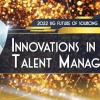For the first time, last year’s US workforce had more millennials (aged 18-30) than Baby Boomers. This generation of workers has arrived in full force. In fact, by 2020, they are projected to make up half the global workforce. Companies that haven’t already changed to meet millennials’ needs should act fast.
Using technology to connect and collaborate
Millennials use technology to make connections and socialise. They’ve redefined “social networks” to mean online connections, not just personal ones. And they like to work together: 88% of Millennials prefer collaborative workplaces. Thanks to smartphones, they’re also used to being constantly connected and “always on.” Millennials are the most likely generation to keep checking their emails after work hours, often on a mobile device. They’re also most likely to use technology to interact at the office. According to PwC, almost half of Millennials prefer to use instant messaging (IM), text and other technologies rather than face-to-face and phone conversations in the workplace. They’ll even use different forms of technology during the same conversation. For example, they might use chat apps or IM to have informal conversations. Then, switch to a video call for more sensitive or nuanced subjects.
Millennials are entering the workforce at the same time as new unified communications and collaboration technologies. They’ll be able to tap into their knack for collaboration and flexible communications. But companies will need to work with them. These steps will help equip their Millennial employees to get the most out of collaboration.
1. Prepare for a flood of data.
Over the last eight years, AT&T has seen network traffic grow by 150,000%, mainly because of video. This tells us bandwidth is very important. These are all data-hungry capabilities, and dropped connections or slow speeds are unacceptable. This means high quality, consistent connectivity is essential – at all times.
2. Use collaboration tools to connect globally.
Global companies can use the Millennial mindset to their advantage. Videoconferencing cuts travel. And using cloud makes collaboration more efficient. Providing employees with the right office tools and collaborative technology means that they don’t have to use external apps and risk leaking information.
3. Be ready to be flexible.
The volume of traffic to and from cloud-based resources can ebb and flow throughout the workday. Special events can also cause a spike in bandwidth needs.
4. Invest in collaboration technologies that work together.
Millennials expect their technology solutions to just work. They don’t care if they come from different providers. Hardware, software and network providers will need to work together to ensure that employees are able to communicate effectively across departments and locations.
5. IT departments need to be ahead of the collaboration game.
Millennials like to be the first to try new technology. They’re always looking for the most efficient route to a solution. On occasion, they may work outside the company’s IT framework to achieve this, which can be a security risk. IT departments and their providers need to work together to put useful and secure solutions in place. This is where external suppliers can help. They can bring in best practices and cutting-edge solutions from across the industry.
This is a critical time for IT departments. They need to change the way they operate to meet the needs of their employees. Millennials are just the start of this change. And how we work together will only become more dependent on technology. As millennials move from entry-level to executive, companies that embrace the changes this generation demands will position themselves to succeed.






